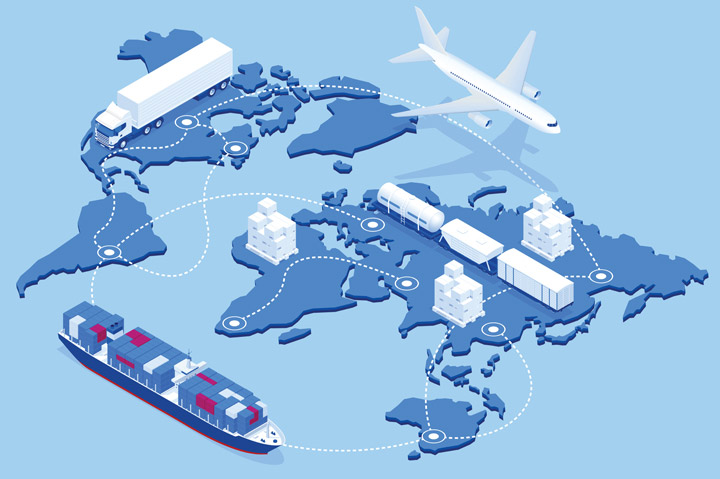News November 10, 2021
Billions Earmarked to Improve Ports to Strengthen Supply Chain
The Biden administration’s plans to address supply chain challenges include a $17 billion investment in port infrastructure and waterways, as well as investments in road and rail upgrades.
As logjams at U.S. ports continue to plague supply chains in the promotional products market and other industries, President Joe Biden has announced plans to invest $17 billion in America’s ports – a move that’s part of broader infrastructural upgrades aimed at improving efficiency and reducing the costs of importing goods and transporting them expediently to their final domestic destinations.
Driven by soaring consumer demand in the economic bounce-back that’s occurred amid the reopening of society following COVID-19 restrictions, historic backlogs of import-bearing cargo ships at major U.S. ports have combined with problems like a domestic truck driver shortage, inadequate transportation capacity, slower/more expensive production from overseas manufacturers and other factors to create ills like inventory shortages and higher product prices in the promo products industry and a spectrum of other markets.

Port congestion has been in the heat of the headlines over the last couple of months, as goods sit stuck on ships idling offshore, unable to be delivered. The Biden administration has taken steps to compel a quicker flow of goods out of port, but bigger things are in the works now that Congress has passed a bill that earmarks about $1 trillion for improvements to American infrastructure, according to the president.
“The legislation invests $17 billion in port infrastructure and waterways and $25 billion in airports to address repair and maintenance backlogs, reduce congestion and emissions near ports and airports, and drive electrification and other low-carbon technologies,” the White House said in a statement. “Port infrastructure and waterway investments will double as an investment in environmental justice in and around port facilities by deploying zero-emission technologies and reducing idling and emissions.”
Additionally, our administration announced immediate actions to reduce current bottlenecks at ports by:
— The White House (@WhiteHouse) November 9, 2021
-Allowing for flexibility in port grants to address supply chain disruptions
-Funding the Georgia Port Authority pop-up container yards project at the Port of Savannah
CNBC quoted sources that said that within the next two months, the administration will start collaboration with the U.S. Army Corps of Engineers on $4 billion worth of construction at coastal ports, inland waterways and other “corps-eligible facilities.”
Forthcoming upgrades at inspection facilities will help make international trade at the U.S.’s northern and southern borders flow more efficiently, officials say. The administration also aims to standardize data-sharing requirements for cargo owners, warehouses, truckers, railroads, terminal operators and shipping lines.
“The U.S. Digital Service is working with the Federal Maritime Commission and the joint program office at the Department of Transportation to build a data framework that will help move goods more efficiently,” according to CNBC.
Additionally, the White House said infrastructure plans call for reauthorizing surface transportation programs for five years and investing $110 billion to repair American roads and bridges – and to support what was described as major, transformational projects along the goods movement supply chain.
“The legislation provides states greater flexibility to address surface transportation workforce development, training and education needs, including activities that address current workforce gaps, including training opportunities for truck drivers to support a renewed national goods movement system,” the White House said.
Meanwhile, there are plans for improvements to the nation’s railways, which the administration says will allow more goods to be transported by rail. This will help expedite transport of cargo and, according to the administration, increase competition and ultimately reduce costs for consumers.
Said the White House: “The legislation invests $5 billion in the Infrastructure for Rebuilding America grant program, which supports highway and rail projects critical to efficient goods movement and provides $5 billion to the Consolidated Rail Infrastructure and Safety Improvements grant program, which funds projects that improve the safety, efficiency and reliability of intercity passenger and freight rail.”
